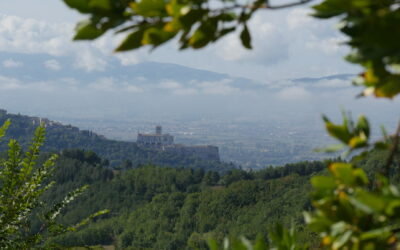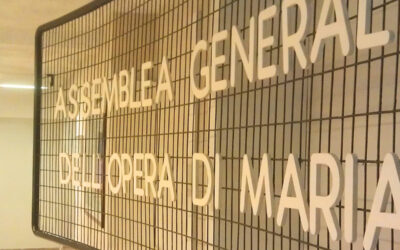 “Just as the stars become brighter in the darkness of a desert, so too in our heavenly path Mary shines with Heavenly strength as the Star of the New Evangelization. . . It is she who guides us along the way.” And this message that was given by the Synod of Bishops on the New Evangelization was the experience of the more than eighty priests and deacons who gathered from different regions of Brazil at the Focolare’s Mariapolis town near to Sao Paulo.
“Just as the stars become brighter in the darkness of a desert, so too in our heavenly path Mary shines with Heavenly strength as the Star of the New Evangelization. . . It is she who guides us along the way.” And this message that was given by the Synod of Bishops on the New Evangelization was the experience of the more than eighty priests and deacons who gathered from different regions of Brazil at the Focolare’s Mariapolis town near to Sao Paulo.
“Mary, “transparency of God, model of pastoral fruitfulness, light for the mission” was the central theme of the congress promoted by the priests sector of the Focolare Movement in Brazil, as a contribution from the charism of unity to the ‘marian priesthood’ that embodies the priestly lifestyle that was inaugurated by the Second Vatican Council for the times in which the Church now lives.
Outlining Mary’s influence on the priesthood, Bishop Francesco Biasin of Barra do Pirai-Volta Redondo, Brazil, spoke of service as “the main promoter” of Gospel brotherhood as a way of life that “does not create relationships of submission but of collaboration and co-responsibility.” This is a lifestyle that aims at laying bridges everywhere, one that is also characterized by personal experiences: “The people have wisdom. We must together listen to the Spirit and not remain closed in our own programming.”
Theologian Sandra Ferreira Ribeiro recalled the new Marialogical formulation given by the Council, and she outlined a few sections from the story of the Focolare Movement, “born with the Gospel in hand, from which a spirituality of unity has blossomed bringing new and original elements to Mariaology, opening a new passageway in ecumenical dialogue as well.” “People today want to see and experience Jesus, to touch the mystery of God, to feel his presence with the senses of the soul. Jesus who makes himself present in fraternal communion makes the fruits of the Spirit to be experienced by those who encounter him: peace, light, love, strength,” affirmed Father Antonio Capelesso who is in charge of the school for priests and seminarians at Mariapolis, during his rich presentation on the connection between “this presence of Jesus in the community and the ecclesiology of Second Vatican Council.”
 This experience became tangible during the congress for seminarians and priests, because of the intense communion between priests and laity. It was the dominant note that also enlivened theological understanding, the sharing of experiences between priests, families and youths, artistic pieces, a visit to some concretizations of this spirituality in the fields of economy and cultural workshops that are part of the Mariapolis.
This experience became tangible during the congress for seminarians and priests, because of the intense communion between priests and laity. It was the dominant note that also enlivened theological understanding, the sharing of experiences between priests, families and youths, artistic pieces, a visit to some concretizations of this spirituality in the fields of economy and cultural workshops that are part of the Mariapolis.
Mary, “all clothed with the Word” appeared as the model of the priestly life. Her life in many of its aspects, as it was deepened and shared in during course of the congress prepared them for a better understanding of that vision of the Church which was outlined by theologian Urs von Balthasar and often recalled by Pope John Paul II and Pope Benedict XVI: the co-essentiality that exists between the Marian and Petrine-institutional profiles of the Church, and it also uncovered some of its concrete implications.
Sources:
Radio Vaticana – RG from 1 November 2012
New Office, Mariapoli Ginetta




0 Comments